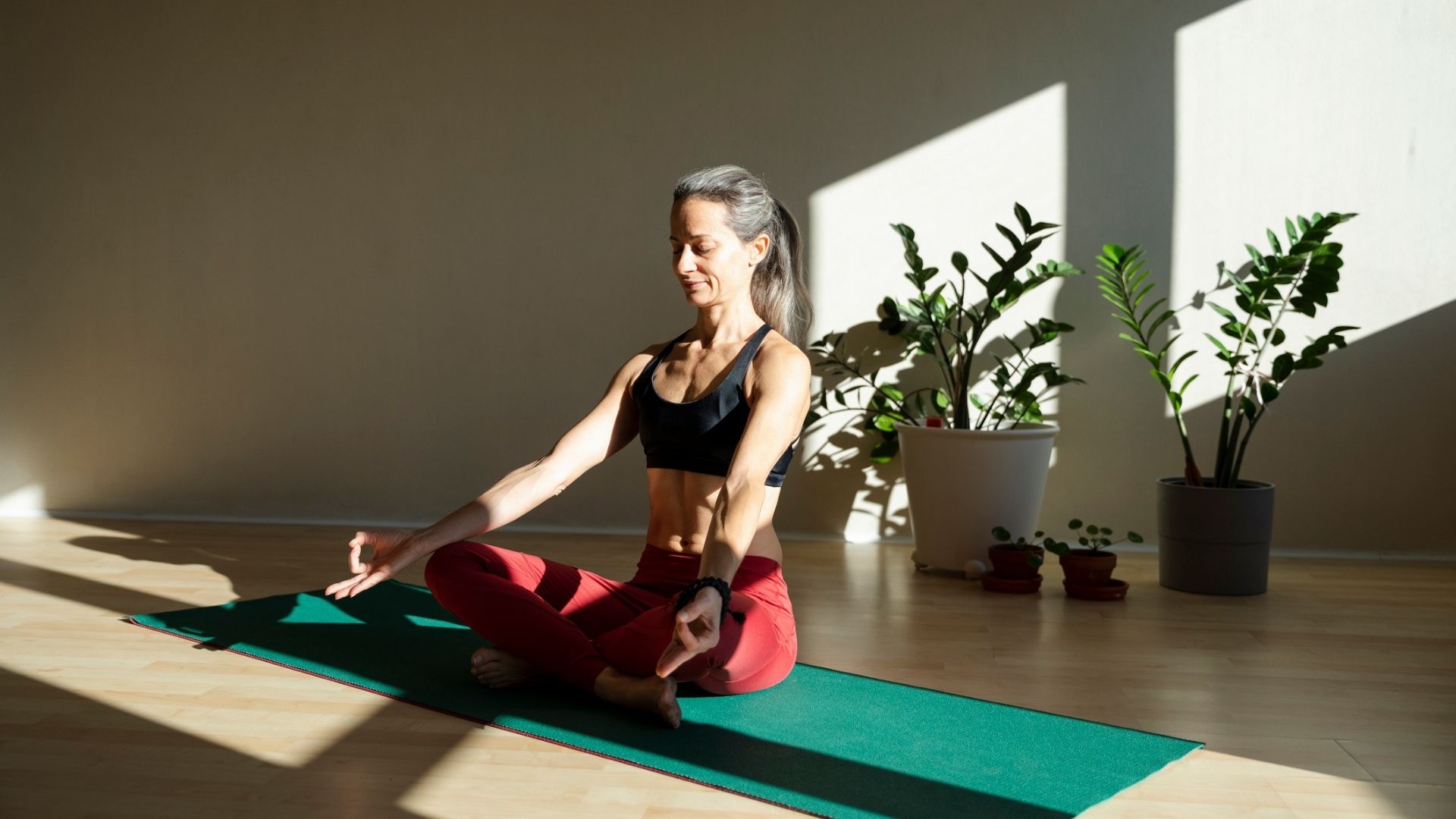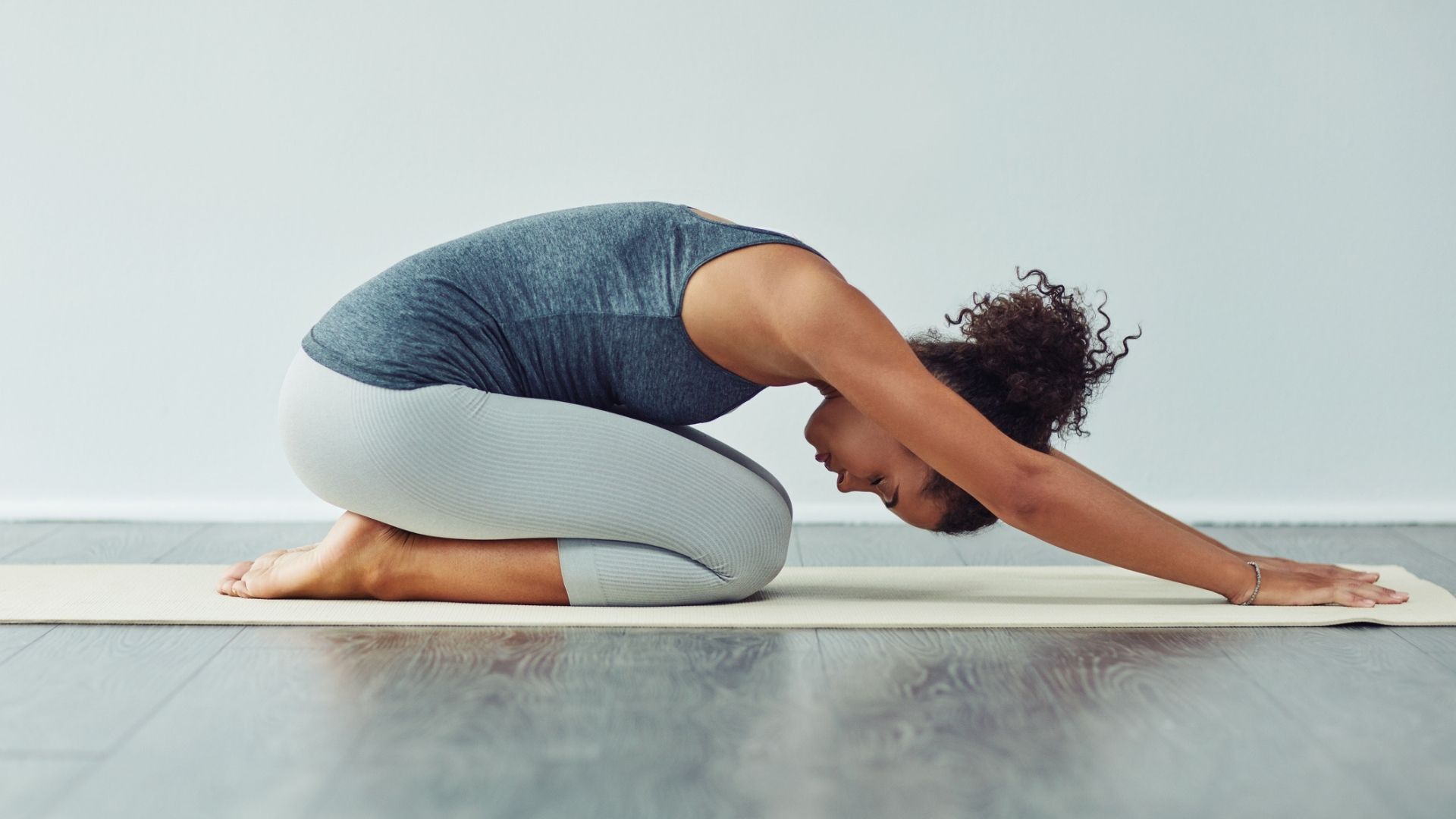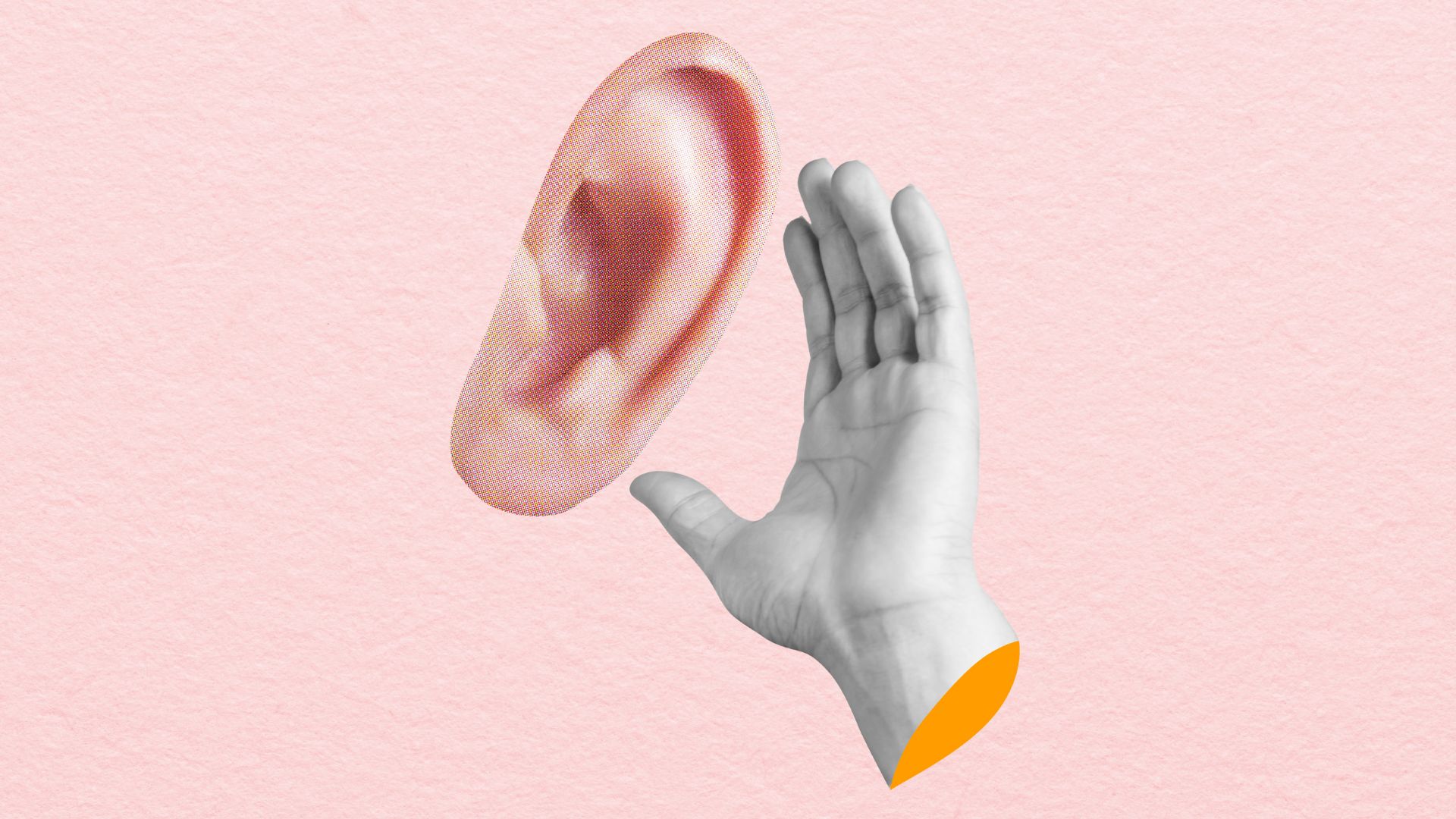The benefits of yin yoga—why you should slow down your flow
This is the expert take on the benefits of yin yoga, including increased flexibility and a calmer mind


You may be unaware of the benefits of yin yoga. After all, dynamic vinyasa flows and hot stretch sessions have long dominated class schedules and social media. However, yin—where poses are executed at a much slower pace than you might be used to—is a practice that comes with a multitude of positives to your physical and psychological wellbeing. These include increased flexibility, boosted health, and calmer thoughts.
Indeed, if you want to learn how to wind down through yoga, then yin is a very good place to start. As you'll find out, research has shown how the practice is effective at stress and anxiety. We've called on the experts to explain yin yoga's many benefits, as well as how it differs from other forms of practice, and the best way to add it to your fitness routine—including the pitfalls to avoid. All you need is to roll out one of your best yoga mats and breathe...
Benefits of yin yoga—what is it?

You've likely heard of vinyasa or hatha forms of yoga, but maybe yin isn't yet on your radar. The main difference is that it's a lot slower-paced—which makes it ideal yoga for beginners. "It is a meditative practice that helps slow both the body and the mind," explains Leah Bush, a yoga instructor and yin teacher at REPOSE.
There's no speeding through flows, with poses are typically held for several minutes at a time. "Unlike traditional 'yang' practices, it harnesses the cold tissues of the body—the connective tissues, ligaments, tendons, fascia," she explains. Because you'll be in one position for a longer time, you'll want to be comfy, so investing in one of these best thick yoga mats could be well worth your while.
Where does it originate from? "The concept of yin yoga consists of postures derived from traditional hatha yoga," reveals yoga instructor Yesim Yuva. "Additionally, it is complemented with various influences from Indian yoga and Chinese Taoism, as well as insights from Western science about the body structure and the function of the internal organs."
The 4 key ways yin yoga can improve your wellbeing
1. It builds resilience
While it might at first seem easier than other forms of yoga, your body will actually be pushed a lot, allowing you to reap greater positives from your stretch session. "It is a slow practice which challenges people in unexpected ways, since you hold the poses for longer periods of time—traditionally four-plus minutes per pose," explains Bush.
In this way, it can force you to sit still, promoting a kind of meditation and mindfulness. "Slowly allowing the body to open and creating space to begin to watch the mind in stillness," adds Bush. All of which builds patience and inner resilience.
Sign up for the woman&home newsletter
Sign up to our free daily email for the latest royal and entertainment news, interesting opinion, expert advice on styling and beauty trends, and no-nonsense guides to the health and wellness questions you want answered.
2. Aids stress-relief
It is really effective at helping you wind down and this form of yoga can be one of the best sleep aids. "It calms and balances the mind and body, which in turn reduces stress and anxiety," notes Caroline Lucas, yoga instructor and founder of Karma Studios. A six-week study carried out in 2021 found that it increased mindfulness and reduced stress and anxiety levels in the long term for participants.
This practice works really well at tackling ongoing stress and anxiety. "On a psychological level, stuck emotions can be released," explains Yuva. "Since yin yoga is a meditative approach to your inner life with a simultaneous focus on your own anatomy, energy flows are stimulated which helps to rest the mind."
3. Boosted flexibility
"As well as affecting you on an emotional and psychological level, yin yoga impacts you physically," explains Yuva. "The entire body becomes more flexible with regular practice. By staying in the poses for a long time, shortened muscles, rigid ligaments, connective tissue, and glued fascia are re-energized and muscles are stimulated."
It is a great practice for stretching out specific areas and overcoming discomfort. "You may be able to localize tension or pain in your body and then specifically release it through the exercise by allowing your body and mind to let go," notes Yuva. "Connective tissues and muscles become more flexible."
4. Improved overall health
This style of yoga can help enhance overall health. Indeed, Lucas points out that it triggers the release of the fascia—or connective tissue—which surrounds all of the body's muscles, joints, and organs, and it also increases circulation." Research has even linked the practice to reduced risk of cardiovascular disease.
What's more, the simple act of slowing the breath can activate the parasympathetic nervous system. Its activities include inducing relaxation, stimulating digestion, and activating metabolism, and it is the opposite of the sympathetic nervous system—which drives the 'fight or flight' stress response. "Yin yoga is perfect if you are tired, or you are over-stimulated and have ‘too’ much energy as it allows you to slow down," explains Lucas.
What's the best way to practice yin yoga?

- Take it slow—"Don’t expect the first time you come to your mat to be able to empty the mind and relax into stillness," says Bush. "For most of us, this is unnatural. Slowly allow yourself the time to explore the practice."
- Build up—"In yin yoga, we hold the shapes for longer than a normal yoga class to allow the fascia to release," explains Lucas. "So start with holding a pose for one to three minutes, before progressing to five minutes." And then beyond—sometimes people hold for up to 15 minutes.
- Get help—"Use as many tools as possible," advises Yuva. "For example, cushions, blankets, straps, blocks, and sandbags. These props will help you to deepen your practice and to stay longer in the poses which will ultimately make you feel more comfortable."
- Be guided—"If you're a beginner, ease in gently with an in-person class so that the teacher can support and assist as required," recommends yoga instructor Eloise Skinner. "After the class, observe your body—see what kind of impact the practice has made on a physical level."
- Keep still—"This is a more meditative practice so do your best to find stillness in each pose," suggests Lucas. By limiting physical movement, you'll also learn how to relax your mind. "Try to release softly into them, without fidgeting or shifting around too much."
- Avoid discomfort—"Obviously if you feel sharp pain during your practice, slowly get out of the pose," says Yuva. "Don’t stay in it because you are instructed to do so by your teacher. Listen to your body and to your nervous system and enjoy the process."
- Breathe properly—"The challenge of the practice is to allow your body to go into the depth of the postures without too much restriction or tension," says Skinner. "Use your breath to support the movement, and only go as far as you can maintain a feeling of openness and release." Learning how to breathe better will also help in other areas of your life too.
- Be open—"Yin yoga is a calm and meditative yoga practice that will support you to surrender to your emotions," adds Yuva. "This can be quite challenging—some people start crying, which is a positive sign. Allow your emotions to come up, welcome them, and then slowly let go of anything that doesn’t serve you anymore."
w&h thanks Leah Bush, yoga instructor and yin teacher at REPOSE, yoga instructor Yesim Yuva, Caroline Lucas, yoga instructor and founder of Karma Studios and yoga instructor Eloise Skinner, for their time and expertise.

Lauren is a freelance writer and editor with a decade of print and digital journalism experience. While she specialises in covering health and wellness topics - ranging from nutrition and fitness, to women’s health conditions and mental wellbeing - she has written across a diverse range of lifestyle topics, including fashion, beauty, interiors and travel.
In addition to writing for Woman & Home and sister title Homes & Gardens, Lauren's work has also been published by Women’s Health, The Times, Daily Telegraph, Elle, Cosmopolitan, The Guardian, Marie Claire, Body + Soul, Stylist, Glamour, Grazia, Red, Dazed Digital, Yahoo Life, The Sun’s Fabulous, Get The Gloss and Hello! among others.
-
 I started losing my hearing in my 40s - here's why you should never ignore the signs like I did
I started losing my hearing in my 40s - here's why you should never ignore the signs like I didNot only the elderly experience signs of hearing loss, contrary to popular belief
By Debra Waters Published
-
 How to plant freesia bulbs: easy steps for colourful summer blooms
How to plant freesia bulbs: easy steps for colourful summer bloomsIf you're looking to add some vivid colour and life to your garden, freesias are the perfect choice
By Emily Smith Published